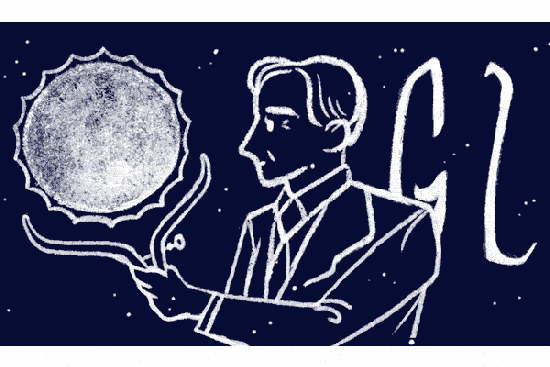
Subrahmanyan Chandrasekhar was the first astrophysicist to win the Nobel Prize in Physics
Ever wondered how the stars you see in the sky might eventually die? Ever thought about how black holes are formed? The subject of Thursday’s Google Doodle is celebrated specifically for his answers to these questions, and for his contribution to our understanding of how celestial bodies evolve.
In 1983, Subrahmanyan Chandrasekhar became the first astrophysicist to win the Nobel Prize in Physics. Described by Google as a “child prodigy,” the Indian-American had already published his first paper and come up with his theory of star evolution before even turning 20, and was elected to the Royal Society of London at age 34.
Google’s animated Doodle, published on what would have been Chandrasekhar’s 107th birthday, is a simple illustration of one of his most important contributions to how we understand the universe — the eponymous Chandrasekhar Limit.
As the animation suggests, the key number is 1.4 times the mass of the Sun. Any star lighter than that will eventually collapse and become a denser body known as white dwarf. When a white dwarf’s mass exceeds 1.4 times that of the Sun, it will continue to collapse and condense, eventually becoming either a supernova explosion or a black hole.
Chandrasekhar’s theories and calculations were met with skepticism when they were first conceived in the 1930s, according to Google — 50 years before the same discoveries were to earn him a Nobel Prize. A string of other honors were also bestowed on him, including the Royal Astronomical Society’s gold medal.